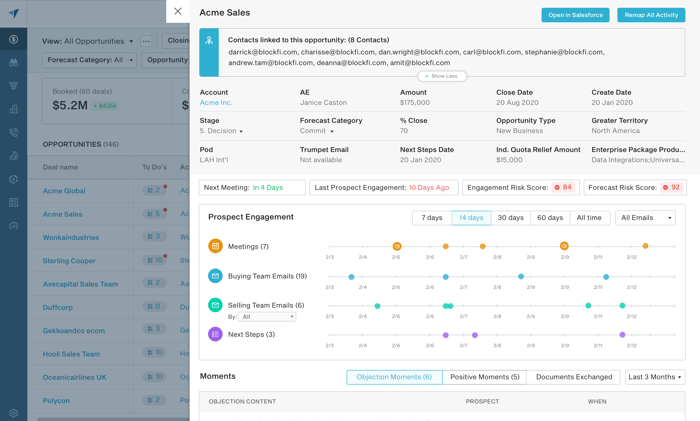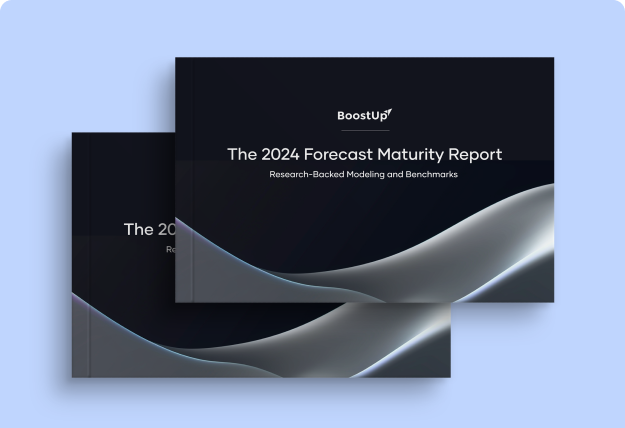The Revenue Blog /
How to Inspect Deals and Win More Revenue
How to Inspect Deals and Win More Revenue

Topics covered in this article
Deal inspection is one of the most crucial and effective components of a successful sales management strategy.
Consistent, thorough, and complete deal inspection yields a more accurate forecast, more revenue, a faster sales cycle, and more effective sellers.
Since managers understand what is occurring within each deal, inspections allow them to better forecast calls. Further, managers can spot potential issues and help guide reps through each deal, resulting in a higher close rate.
Deal inspection also helps sellers understand exactly what steps they need to take to close a deal. Therefore, they can focus on the tasks that drive success and shorten deal length, resulting in more revenue generated within a given period. Finally, since salespeople are actively being coached through each deal, they become better sellers, requiring less oversight over time.
So, deal inspection is obviously important, but what is the best way to do it?
Four Key Components of Deal Inspection
As you review deals, first check four key components:
Close date- Is the date in the current quarter? Has the date been changed? Does it set a reasonable length of time for the sales process?
- Look for changes in dates, stages, and amounts. Ensure that the deal is being progressed to the next forecast category within a reasonable amount of time, and the next steps always reflect forward movement.
- Has the amount remained the same? Has it been lowered?
- Ensure there is a next meeting, and that all necessary action has been taken. What is the strategy for moving the deal forward?
Deal Inspection within a Sales Framework
Deal inspection is far more powerful when used within the context of a sales framework. One of the most proven sales methodologies is MEDDICC.
MEDDICC consists of a series of components that every salesperson must identify, cover, and focus on for a successful sale. They are metrics, economic buyer, decision criteria, decision process, implicate pain, champion, and competition.
When examining deals through the lens of MEDDICC, managers should ensure that each of the criteria is met. If they are not, managers should coach reps through achieving them. For forecasting, a deal should not be included as a win unless components are present and complete.
Deal Inspection in BoostUp
Forecasting platforms like BoostUp use streamlined workflows, advanced insights, and AI for both a rapid and thorough deal inspection process.
In BoostUp, you can drive straight from a 10,000-foot view of your entire pipeline, down to teams, salespeople, and individual deals so you can see exactly what is driving your forecast.
When inspecting a deal in BoostUp, the most crucial components are immediately surfaced for you.
.png?width=700&name=boostup_accounts2@2x%20(2).png)
Here’s what to look for:
Involved contacts
- Ideally, your deals should be multi-threaded, with more than one contact involved.
Next steps and risk factors
- See when the next meeting is (or if one has occurred without a follow-up scheduled).
- See when the last prospect engagement occurred.
- View AI engagement risk scores to determine if the deal is at risk of a loss.
Overall Engagement
- Examine the timeline of when meetings were held, emails sent, and planned next steps. They should be spread evenly across the timeline, with an increase in frequency as time goes on. This indicates interest, excitement, and engagement.
Key moments
- Understand which competitors are involved in the deal and if they are still actively being discussed.
- Where objections have happened, and if they have been dealt with.
- Positive moments, and how they were capitalized on
- Attachments like decks, order forms, NDAs, etc to show a progression of the deal
Engagement
- Review individual correspondence for positive or negative sentiment, and if anything needs to be addressed.
- Check for a progression of meetings, moving from discovery and qualification to demo, pricing, and so on.

Topics
- Look for key points that keep surfacing - see if there are any sticking points or positive selling points that are a clear benefit.
In the end, deal inspection is a great way to not only ensure that deals close, it is essential to your forecasting function.




-Photoroom.png)